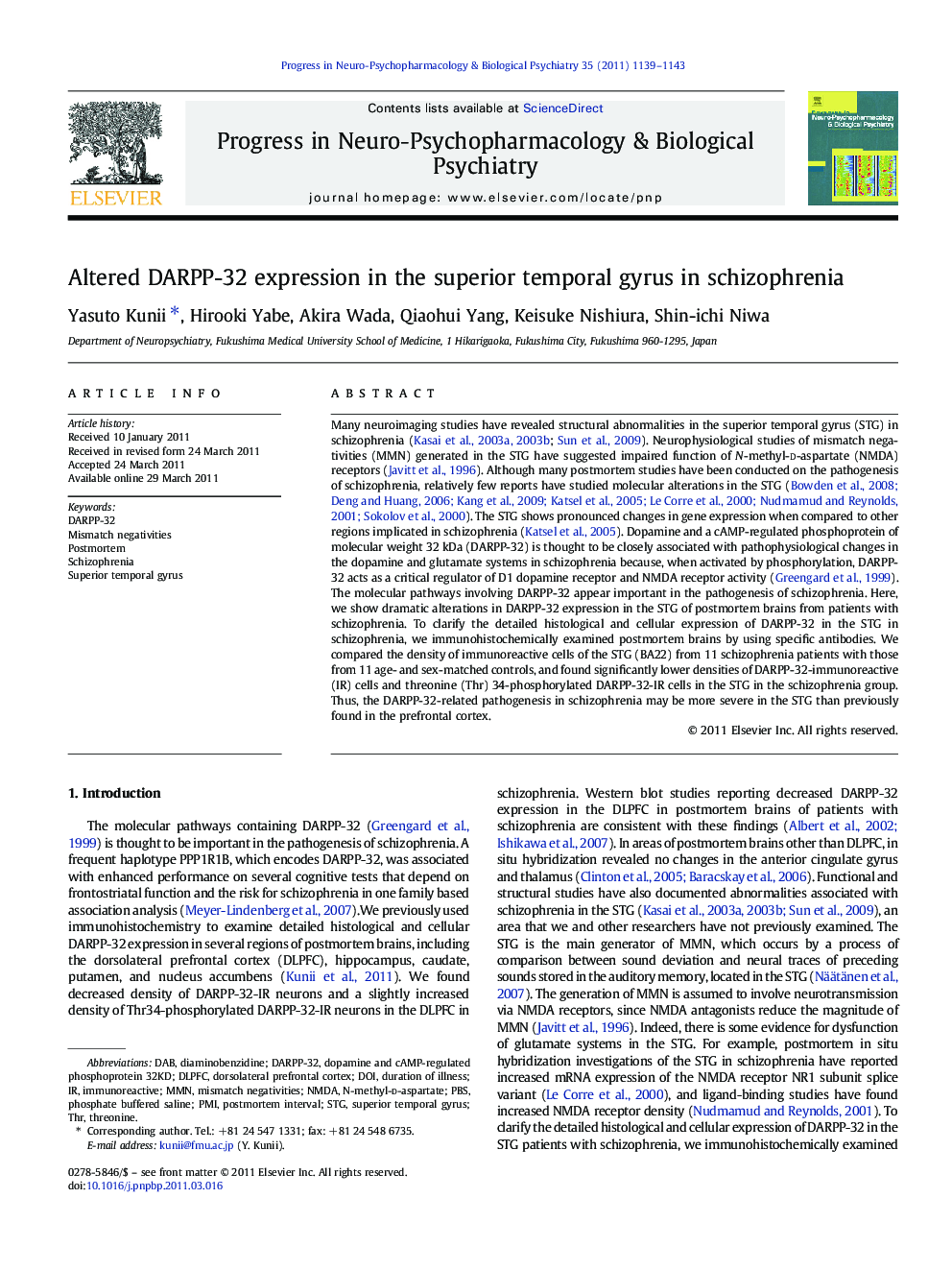| Article ID | Journal | Published Year | Pages | File Type |
|---|---|---|---|---|
| 2565260 | Progress in Neuro-Psychopharmacology and Biological Psychiatry | 2011 | 5 Pages |
Many neuroimaging studies have revealed structural abnormalities in the superior temporal gyrus (STG) in schizophrenia (Kasai et al., 2003b and Kasai et al., 2003a; Sun et al., 2009). Neurophysiological studies of mismatch negativities (MMN) generated in the STG have suggested impaired function of N-methyl-d-aspartate (NMDA) receptors (Javitt et al., 1996). Although many postmortem studies have been conducted on the pathogenesis of schizophrenia, relatively few reports have studied molecular alterations in the STG ( Bowden et al., 2008, Deng and Huang, 2006, Kang et al., 2009, Katsel et al., 2005, Le Corre et al., 2000, Nudmamud and Reynolds, 2001 and Sokolov et al., 2000). The STG shows pronounced changes in gene expression when compared to other regions implicated in schizophrenia (Katsel et al., 2005). Dopamine and a cAMP-regulated phosphoprotein of molecular weight 32 kDa (DARPP-32) is thought to be closely associated with pathophysiological changes in the dopamine and glutamate systems in schizophrenia because, when activated by phosphorylation, DARPP-32 acts as a critical regulator of D1 dopamine receptor and NMDA receptor activity (Greengard et al., 1999). The molecular pathways involving DARPP-32 appear important in the pathogenesis of schizophrenia. Here, we show dramatic alterations in DARPP-32 expression in the STG of postmortem brains from patients with schizophrenia. To clarify the detailed histological and cellular expression of DARPP-32 in the STG in schizophrenia, we immunohistochemically examined postmortem brains by using specific antibodies. We compared the density of immunoreactive cells of the STG (BA22) from 11 schizophrenia patients with those from 11 age- and sex-matched controls, and found significantly lower densities of DARPP-32-immunoreactive (IR) cells and threonine (Thr) 34-phosphorylated DARPP-32-IR cells in the STG in the schizophrenia group. Thus, the DARPP-32-related pathogenesis in schizophrenia may be more severe in the STG than previously found in the prefrontal cortex.
Research Highlights► DARPP-32 expression decrease in the superior temporal gyrus of schizophrenia. ► This decreased expression is found in both neurons and glial cells. ► These results are more severe than our previous findings in the prefrontal cortex.
